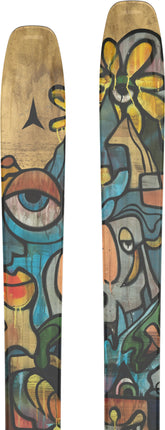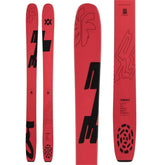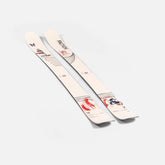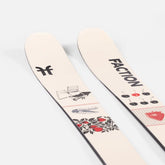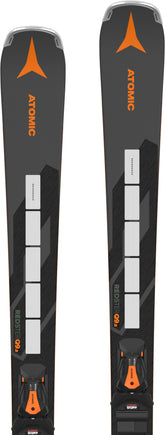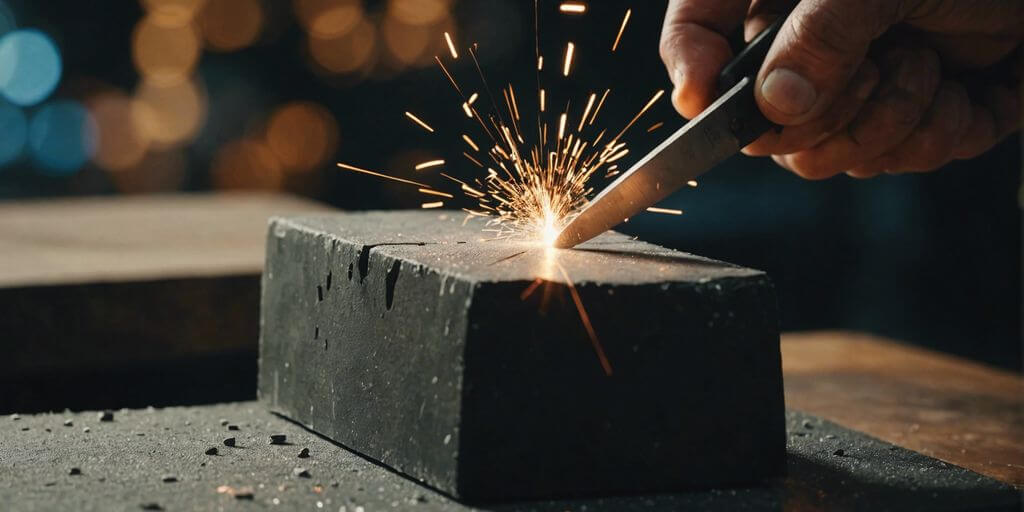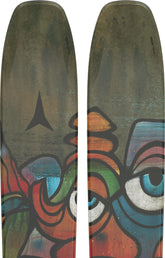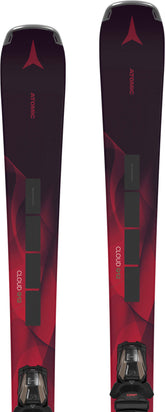Choosing the right edge angle for your skis is crucial for optimizing performance and ensuring safety on the slopes. The edge angle affects how your skis grip the snow, turn, and handle various conditions. This article will guide you through understanding ski edge angles, selecting the right angle based on your skill level, and maintaining your ski edges for peak performance.
Key Takeaways
- The standard recommendation for edge bevels is 1 degree base edge and 1 degree side edge, equating to a 91-degree angle.
- Small changes in edge angles, even less than half a degree, can significantly impact ski behavior.
- Beginners should start with a base edge angle of 1.0 degrees and adjust as they gain experience.
- Different skiing conditions and skill levels require different edge angles for optimal performance.
- Proper tools and techniques, such as using files for rough shaping and diamond stones for sharpening, are essential for effective ski edge maintenance.
Understanding Ski Edge Angles
Understanding the correct ski edge angles is crucial for optimal performance and safety on the slopes. Seemingly minute changes in edge angles can majorly impact how a ski behaves.
The Basics of Edge Bevels
Edge bevels are the angles at which the ski edges are tuned. There are two main types of edge bevels:
- Base Edge Angles: These affect how far the point on your edges gets lifted off the snow when the ski is flat. They generally range from 0 to 3 degrees. A smaller angle will help the ski initiate turns quickly, but can make things happen a little too quickly. Conversely, a larger angle will take longer to initiate turns but will be more predictable.
- Side Edge Angles: These angles are measured from the vertical side of the ski. A common recommendation is a 1-degree base edge and a 1-degree side edge, which is also known as a 91-degree angle. More aggressive angles can be more effective but also more dangerous.
Impact of Small Angle Changes
Even changes of less than half a degree can significantly alter ski performance. For instance, if the ski feels like it is washing out of turns and not holding an edge, you might need to increase the edge angle. On the other hand, if the ski has a mind of its own once on edge and doesn't like to release from turns, decreasing the edge angle might be necessary.
Manufacturer Recommendations
Some ski manufacturers provide their recommended edge angles for specific skis, usually buried away in technical specs. It's always a good idea to check these recommendations to ensure you're tuning your skis correctly.
If the ski feels like it is washing out of turns and not holding an edge, increase the edge angle. If the ski has a mind of its own once on edge and doesn't like to release from turns, decrease the edge angle.
Choosing the Right Edge Angle for Your Skill Level
Beginner Edge Angles
For beginners, a larger edge angle is recommended. This typically means a 1-degree base edge and a 1-degree side edge. These angles provide a forgiving experience, making it easier to control the skis and reducing the risk of catching an edge.
Intermediate Edge Angles
Intermediate skiers can start experimenting with slightly smaller angles. A common setup is a 1-degree base edge and a 2-degree side edge. This configuration offers a balance between grip and ease of turning, allowing for more dynamic skiing.
Advanced Edge Angles
Advanced skiers often prefer more aggressive angles to maximize performance. A 0.5-degree base edge combined with a 3-degree side edge can provide the precision and grip needed for high-speed turns and challenging conditions. However, these angles require more skill to handle effectively.
The atomic bent 100 ski offers pure enjoyment with lightweight design, soft flex, and impressive pop. Ideal for intermediate to advanced skiers seeking a fun and engaging ride.
Tools and Techniques for Sharpening Ski Edges
Using Files for Rough Shaping
Files are essential for the initial shaping of your ski edges. They help remove large amounts of material quickly and are ideal for setting the desired edge angle. A side edge file, which is a short file designed to follow the contours of modern shaped skis, is particularly useful. If you are mechanically competent and approach ski tuning methodically, maintaining your ski's edges isn't truly that hard.
Diamond Stones for Sharpening
Diamond stones are used for fine-tuning and sharpening the edges after the rough shaping is done. These stones come in various grits, ranging from 100 to 1000+. A full set of diamond stones allows you to achieve a polished, sharp edge. Some people prefer ceramic stones or Arkansas Pocket Stones as alternatives. For harder snow, a sharper side edge angle helps the ski bite and carve.
Removing Burrs Effectively
After tuning, it's crucial to remove any burrs that may have formed on the edges. A gummi stone is commonly used for this purpose. It acts similarly to a honing steel for a chef's knife, ensuring that the edges are smooth and free of imperfections. These stones come in various hardnesses; starting with a medium hardness is recommended. Alpine base & edge offers sharpening and waxing services for skis and snowboards. Visit /products/sharpen-and-wax for details and pricing.
Regular maintenance and proper technique can significantly extend the life of your ski edges and improve your skiing performance.
Common Mistakes in Ski Edge Tuning
Over-Aggressive Angles
One of the most common mistakes is setting overly aggressive edge angles. This can make the skis too sharp, leading to unpredictable behavior on the slopes. It's essential to find a balance that suits your skiing style and conditions.
Neglecting Base Edges
Neglecting the base edges is another frequent error. While side edges often get the most attention, the base edges are equally important for maintaining control and performance. A professional edge grind service enhances ski performance with edge hold.
Improper Tool Use
Using the wrong tools or improper techniques can damage your skis. Always ensure you're using the correct files, stones, and guides for your specific needs. Consistency is key; follow a routine that ensures the same tune every time.
Regular maintenance and proper tuning can significantly extend the life of your skis and improve your overall skiing experience.
Edge Angles for Different Skiing Conditions
Soft Snow vs. Hard Snow
When skiing in soft snow, a larger base edge angle (around 1.5 to 2 degrees) can help the ski float better and initiate turns more smoothly. In contrast, hard snow conditions benefit from a smaller base edge angle (0.5 to 1 degree) to ensure the edges bite into the snow more effectively, providing better grip and control.
Racing vs. Recreational Skiing
Racers often prefer more aggressive edge angles, such as a 0.5-degree base edge and a 3-degree side edge, to maximize edge hold and precision. Recreational skiers, on the other hand, might opt for a 1-degree base edge and a 2-degree side edge for a balance of performance and ease of use.
Adjusting Angles for Terrain
Different terrains require different edge angles for optimal performance. For steep, icy slopes, a sharper edge angle (e.g., 0.5-degree base and 3-degree side) is recommended to ensure maximum grip. For varied terrain, a more moderate angle (1-degree base and 2-degree side) provides versatility and control.
Remember, seemingly minute changes (less than half a degree) majorly impact how a ski behaves. Adjust your edge angles based on the specific conditions and your skiing style for the best experience.
Maintaining Your Ski Edges
Regular Inspection Tips
Regularly inspecting your ski edges is crucial for maintaining optimal performance. Look for any nicks, burrs, or rust that may have developed. Especially in ski resorts where artificial snow is installed, this can be a problem. You can prevent this by ensuring that your ski edges are always properly sharpened. That way you’re having more skiing fun and more safety at the same time!
When to Re-Sharpen
Knowing when to re-sharpen your ski edges can make a significant difference in your skiing experience. Lightly tuning your edges with one of those 90-degree edging files generally works fine, and also extends the life of your skis: it takes away less metal than if you do an 88 or if you get a shop to do any kind of machine tuning.
Storage and Care
Proper storage and care of your skis can extend their lifespan. Always dry your skis thoroughly before storing them to prevent rust. Store them in a cool, dry place away from direct sunlight. If you're serious about the condition of the skis then you ought to consider doing it yourself and play with the angles, start at 90 and drop in two steps to 88 and see if it suits you.
A great way to handle ski maintenance is to wax your own skis, touch up the burrs with a fine grit diamond stone (400-grit or so), and let a professional ski shop handle your edges a couple times per season. This would be analogous to doing your own oil changes on a car, but letting a mechanic deal with fixing the brakes and replacing the spark plugs.
Conclusion
Choosing the right edge angle for your skis or knives is crucial for achieving the desired performance and safety. A standard recommendation is a 1-degree base edge and a 91-degree side edge, but this can vary based on your skill level and the specific requirements of your equipment. Remember, even minor changes in edge angles can significantly impact how your equipment behaves. Always consult the manufacturer's guidelines and use the appropriate tools for shaping and sharpening. By understanding and carefully selecting your edge angles, you can enhance your skiing or cutting experience while maintaining safety and durability.
Frequently Asked Questions
What is the standard edge angle for skis?
The one-stop recommendation for edge bevels is a 1-degree base edge and a 91-degree side edge. These angles provide a good balance between performance and safety.
How do small angle changes affect ski performance?
Seemingly minute changes, even less than half a degree, can majorly impact how a ski behaves. More aggressive angles can enhance performance but may also be more dangerous.
What edge angle should beginners use?
Beginners typically use a base edge angle between 0.5 and 2.0 degrees. Starting with 1.0 degrees is recommended, and adjustments can be made based on how the ski feels.
Are there manufacturer recommendations for edge angles?
Yes, some ski manufacturers provide recommended edge angles for specific skis. These recommendations are usually found in the technical specifications of the skis.
What tools are best for sharpening ski edges?
Files are used for rough shaping, while diamond stones are used for sharpening, smoothing, and removing burrs from the edges.
How do edge angles differ for various skiing conditions?
Edge angles can be adjusted based on skiing conditions. For example, softer snow may require less aggressive angles, while harder snow may benefit from sharper angles.
